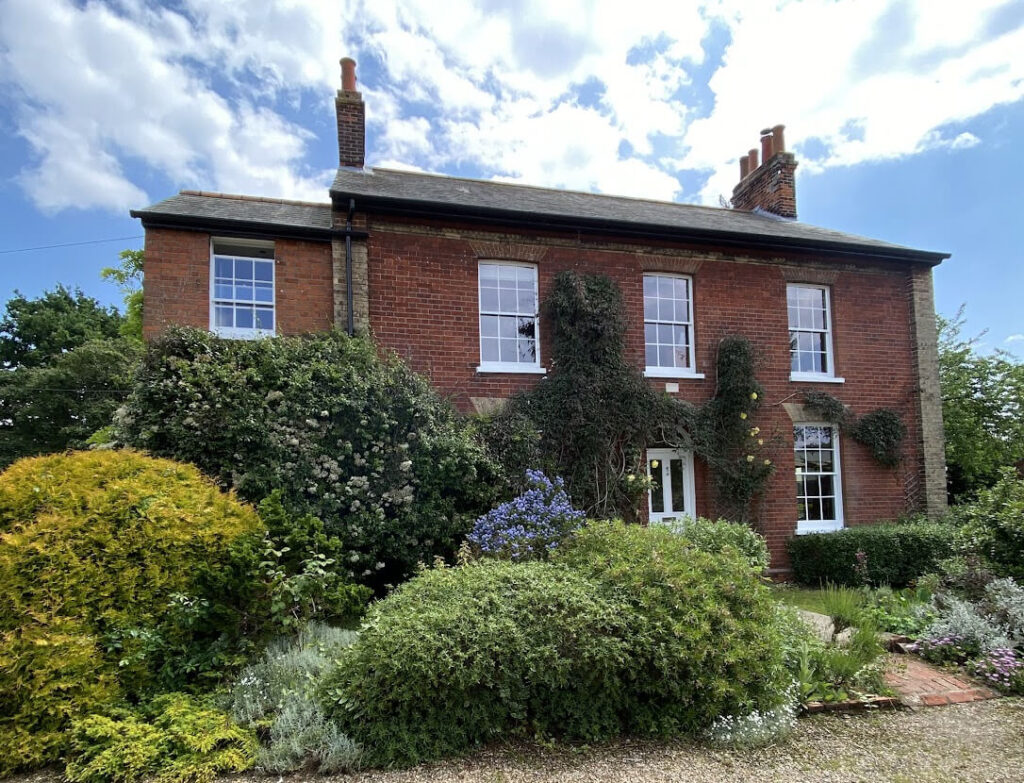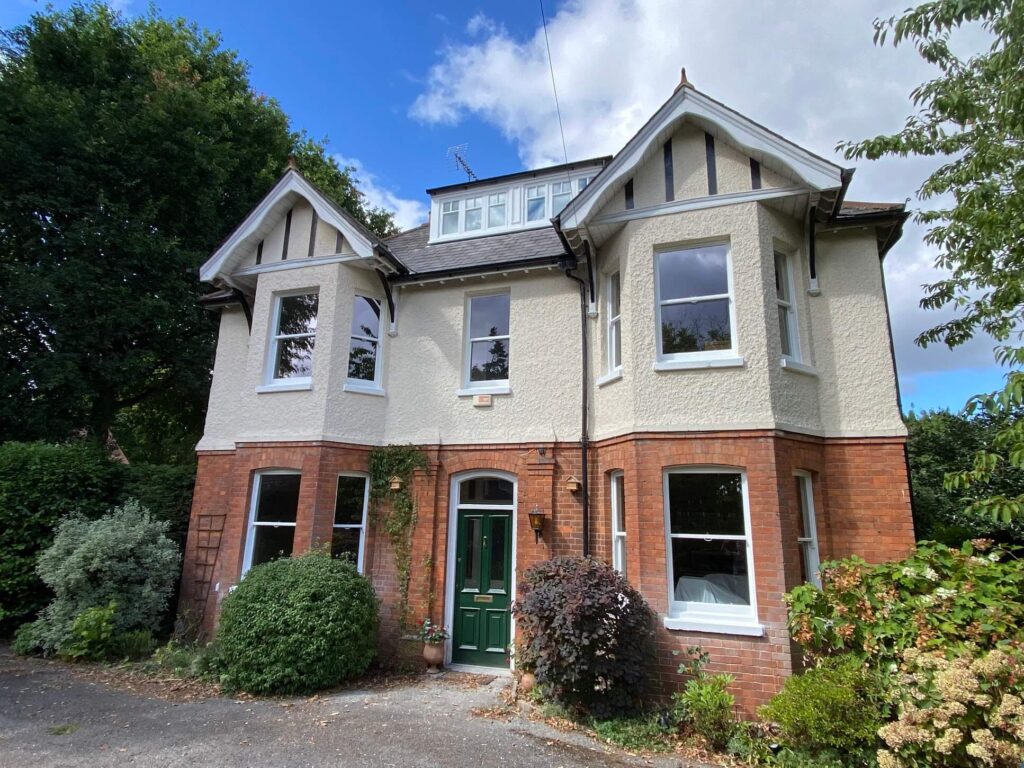
The house is a lovely Victorian building with no bar and coupled-style timber sash windows in Farnborough, Hampshire.
The homeowners asked us to retrofit the single glazing with double-glazed units, fit draught-proofing strips and refurbish frames. Our team also was tasked to re-paint windows after restoration and reglazing were completed.
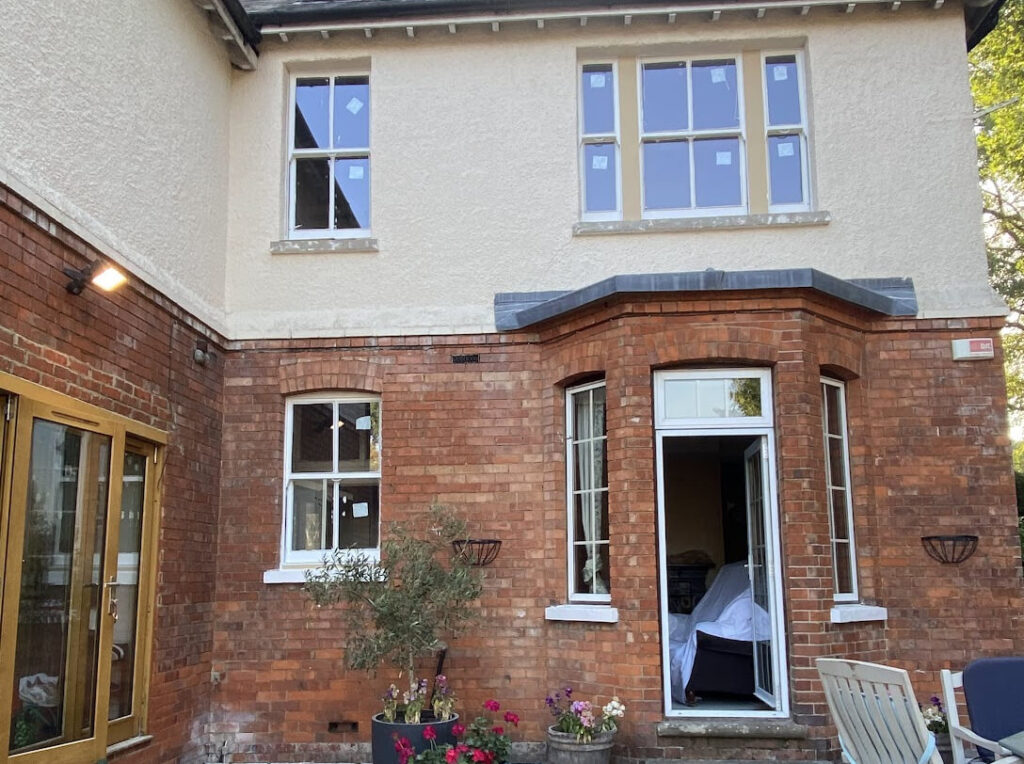
The process of timber windows reglazing
In order to reglaze the timber sashes, we first removed them from the box frames. Once the sashes are on the ground, the old putty can be scraped away, and the glass panes can be removed. When the old glass is out, it is time for some work with the router.
Next, we sanded down the frames before fitting new glass in. Once the frames were sanded, inserted the glass and affixed with modern resin putty.
Finally, we secured reglazed sashes into frames.
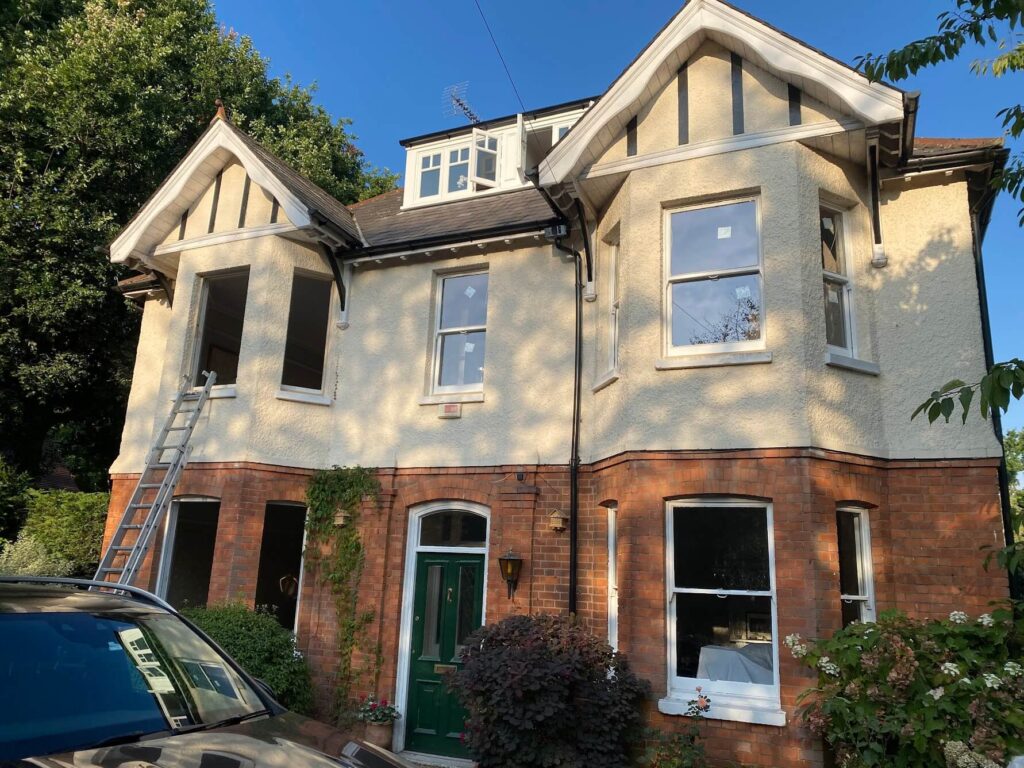
Why should you upgrade the existing window’s glazing?
With rising energy costs and environmental concerns about our use of fossil fuels, homeowners are increasingly looking for ways to make their homes more energy-efficient.
Double-glazed sashes insulate the home and prevent heat from escaping. In addition to making the home more comfortable during the winter, double-glazing can also help to reduce energy bills.
Vacuum glazing stops heat from escaping the house through the glass of the window. As a result, homeowners who reglaze single glazing can enjoy reduced energy bills.

In this project, we used FINEO glass. This vacuum-insulated glazing is specifically made for a restoration project. It is ultra-thin but, thanks to vacuum insulation, is as efficient as regular triple glazing.
The reglazed sashes look like new and will help to keep the house warm and comfortable.
Our recent projects
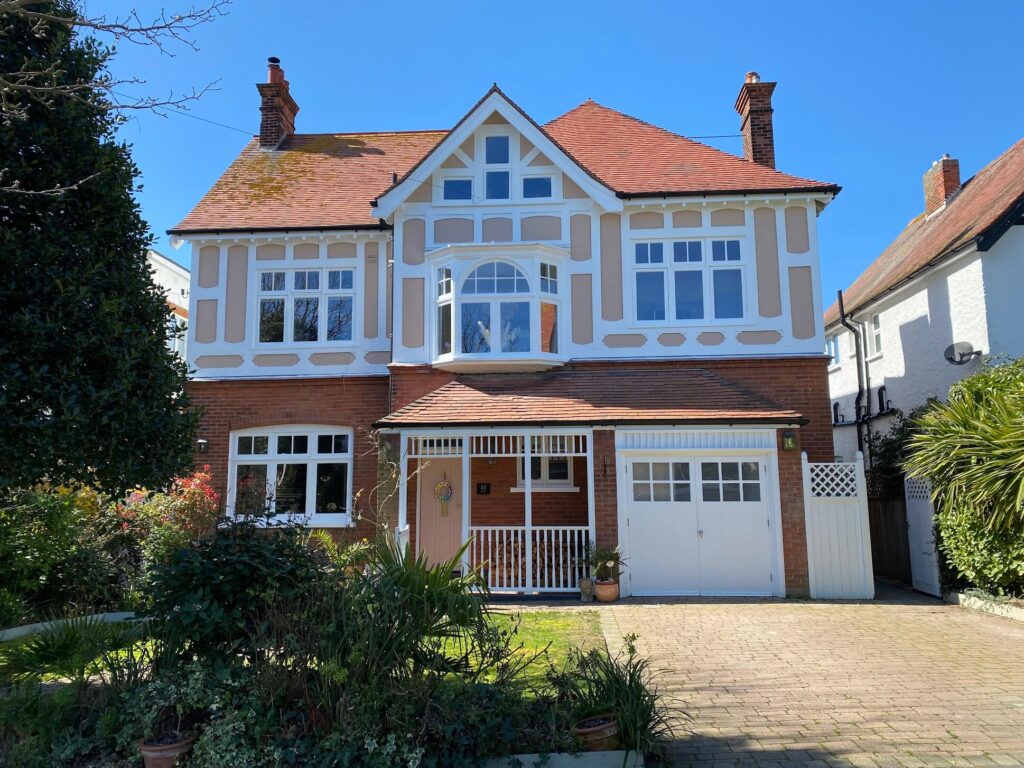
Wooden windows double glazing in Frinton-on-Sea

Sash windows restoration in West Essex

Double glazing Listed Grade 2 building
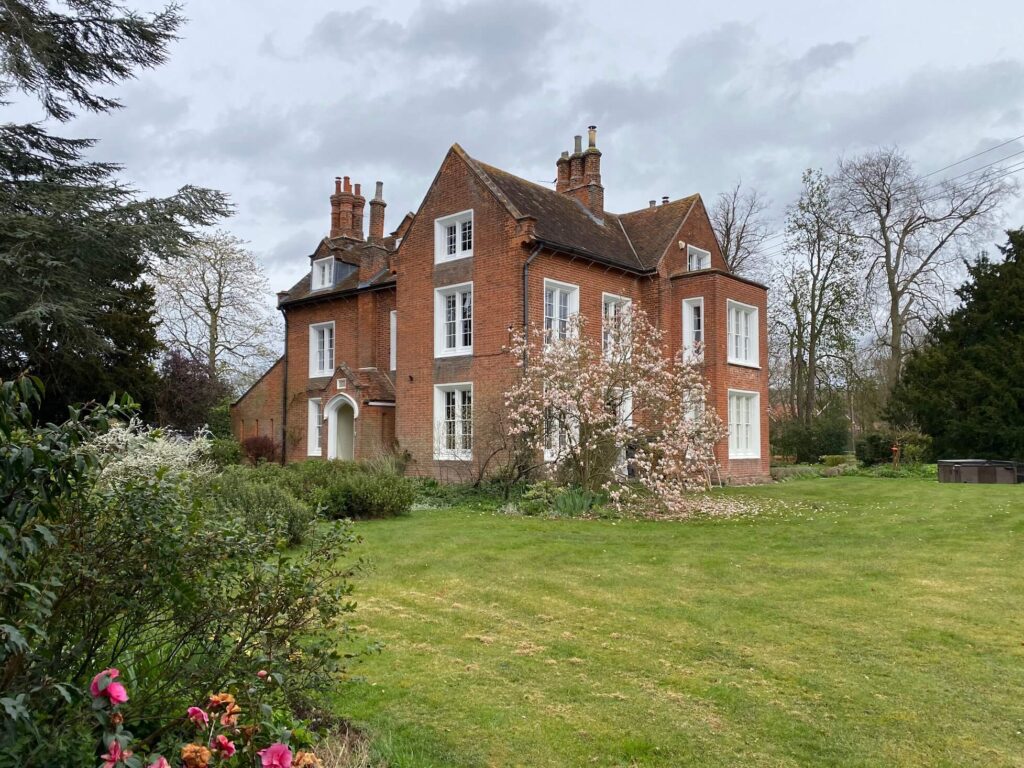
Retrofit double-glazing Essex

Reglazing timber windows Farnborough
